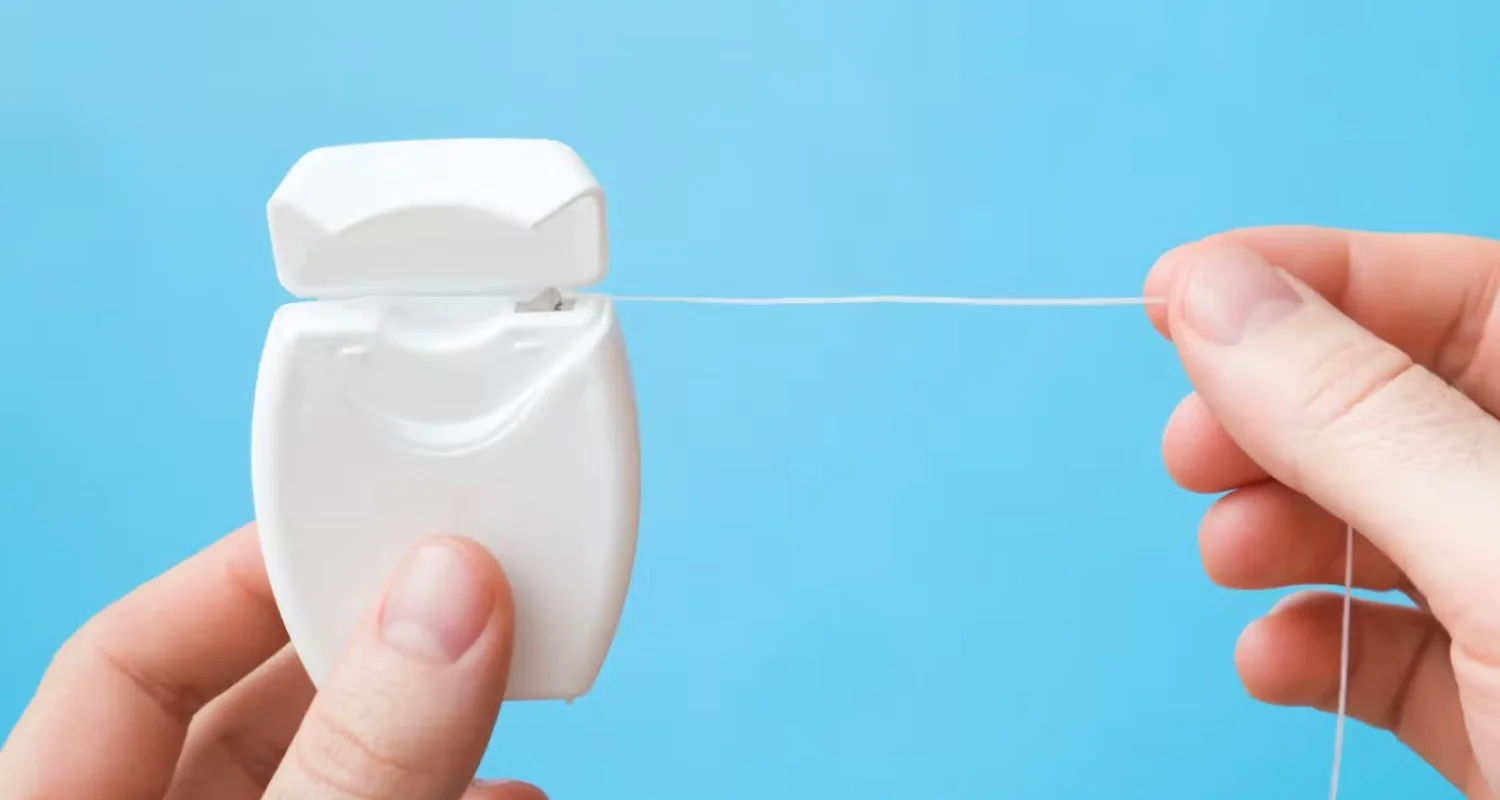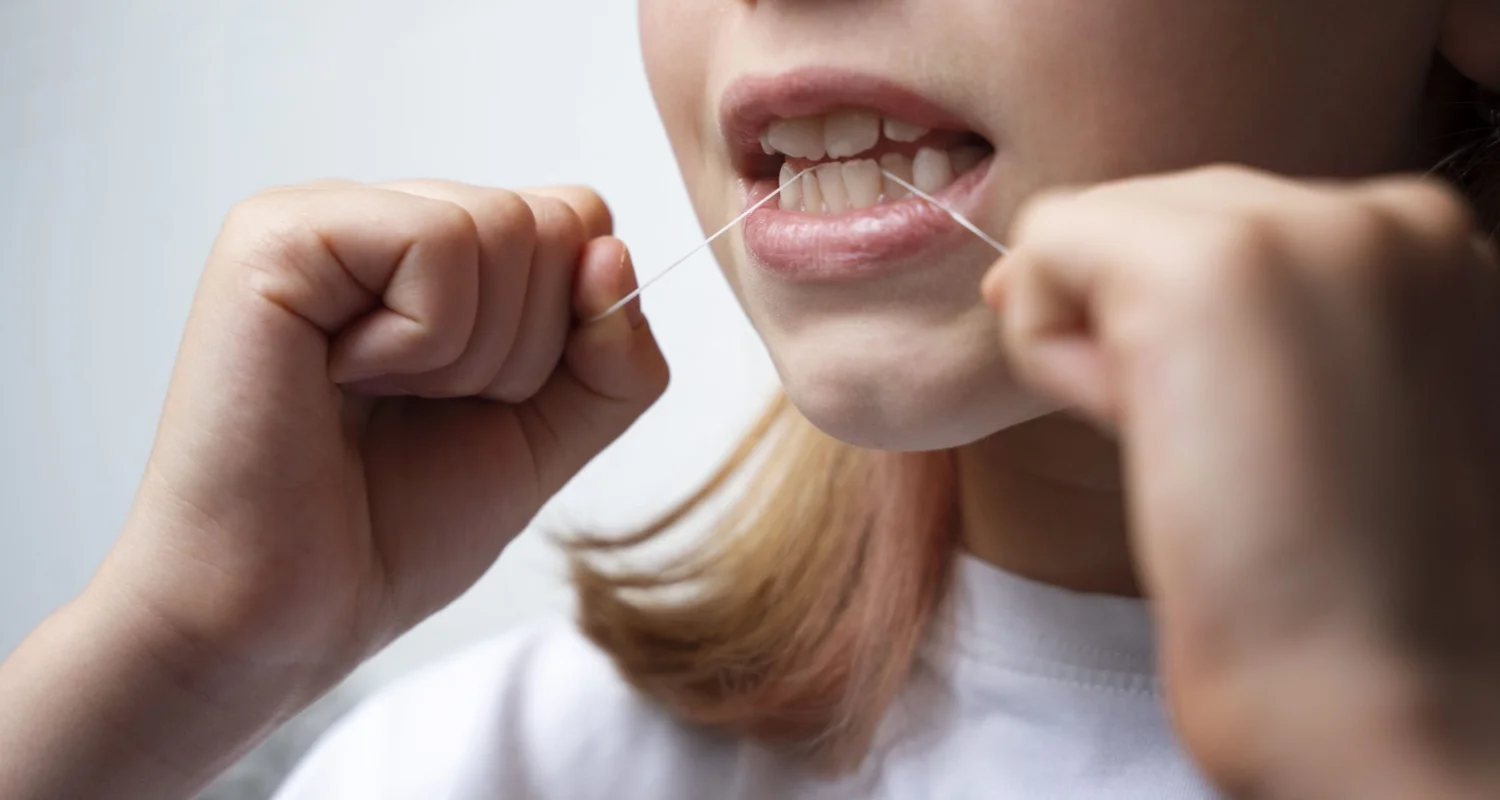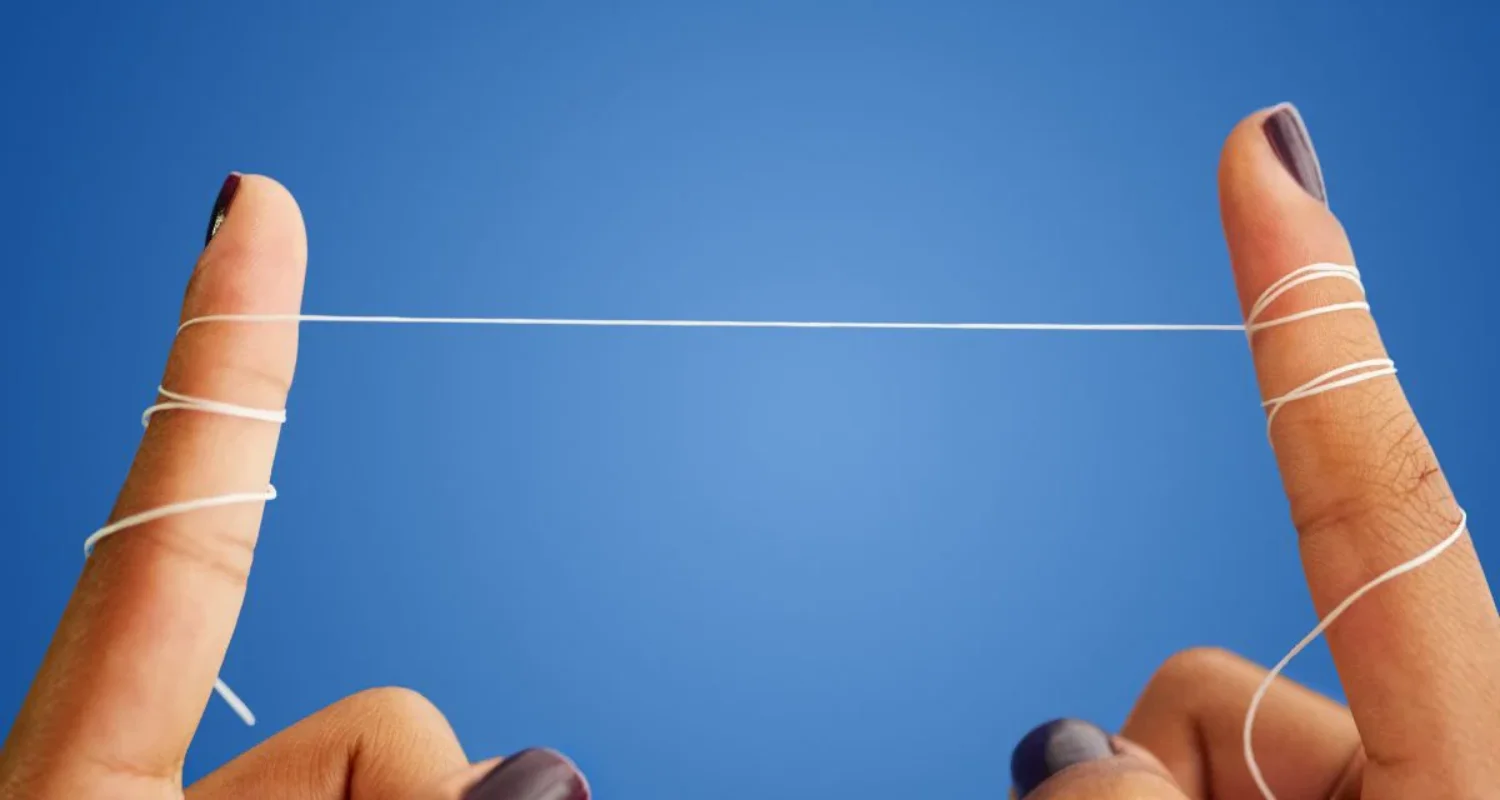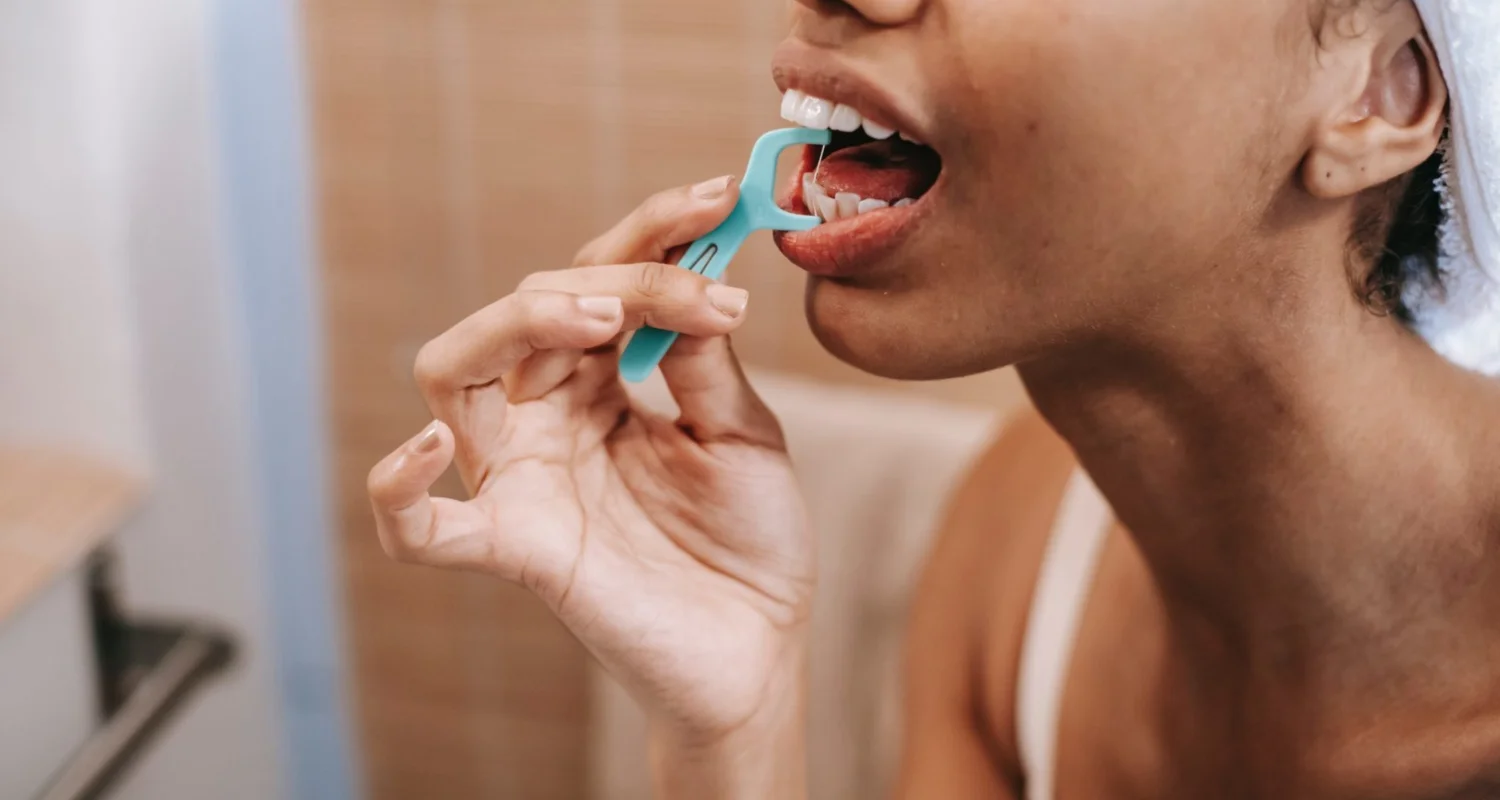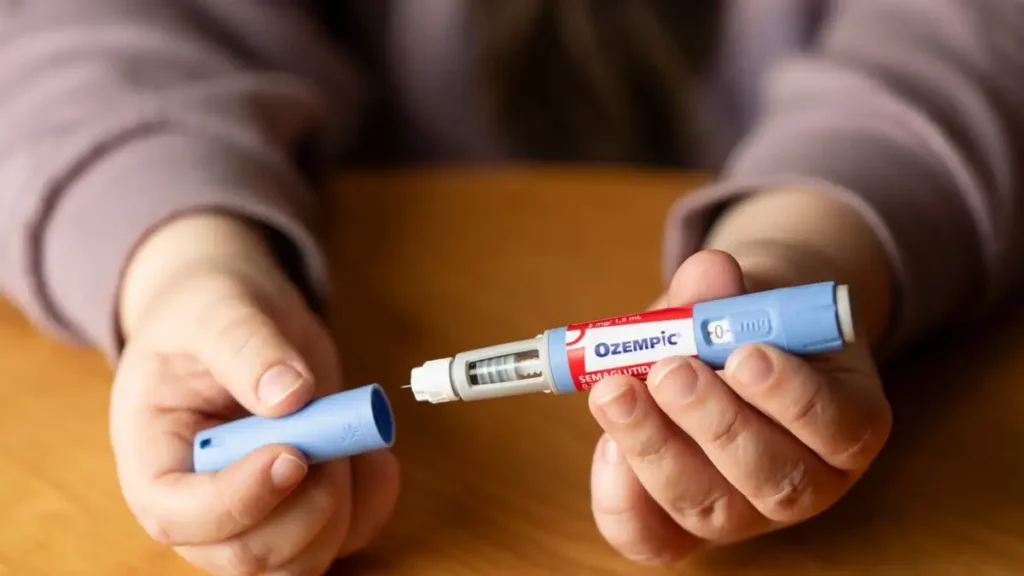Last Updated on: 19th September 2025, 12:37 pm
Are you struggling between dental Tape vs floss?
Daily flossing is essential to maintaining good oral hygiene. While brushing is done to remove plaque and food debris from the visible surfaces of your teeth, flossing is crucial to cleaning the areas between your teeth and below the gum line, places that a toothbrush can’t reach.
The American Dental Association (ADA) suggests that you clean between your teeth using floss or some other type of interdental cleaner at least once a day. However, it’s important to floss correctly, as improper flossing can cause damage to your gums or teeth.
Flossing before brushing helps reduce bacteria buildup and prevents gum disease and cavities. There are two options on the market: dental floss and dental tape. By understanding the difference between the two, you can choose the best option for you. Continue reading to better understand the differences between dental tape and floss!
Pros and Cons of Dental Tape vs Floss for Oral Health
Dental tape
Dental tape is a type of interdental cleaner used to remove plaque and food debris from between teeth. It is usually made of waxed nylon or polyethylene fiber and is wider, flatter, and softer than dental floss, making it easier to slide between teeth, especially for people with wider spaces or sensitive gums. Its flat texture and larger contact surface allow it to cover more area, making it effective for cleaning between teeth without causing undue friction or discomfort.
Advantages:
● Use in wide spaces: the wide design allows it to clean and cover the surfaces of the teeth effectively.
● Compatible with gums: having a soft texture prevents irritating or cutting the gums, making it suitable for sensitive gums.
● Effective sliding: being elastic, it is ideal for tight contact points between teeth as it facilitates sliding.
Disadvantages:
● Less resistance: being flat and wide, it is easier to tear.
● Less control and access: Its wide design prevents precise control in narrow or difficult-to-access spaces.
Dental Floss
Dental floss is a long, thin filament used to clean between teeth and along the gumline. It comes in waxed or unwaxed versions, with or without aromas and flavors such as mint, depending on the user’s preferences and needs.
Its thin, flexible structure allows it to reach the tightest spaces between teeth, where a toothbrush cannot reach, to remove food debris and plaque. It is particularly effective in preventing plaque buildup and avoiding oral health problems such as gingivitis and cavities. If used improperly and too much pressure is applied, it can cause damage to the gums.
Advantages:
● Use in narrow spaces: its thin design allows it to better pass through very close contact points with narrow interdental spaces, removing plaque and providing better cleaning.
● Cleaning along the gum line: its fine structure allows for effective cleaning along the gumline, where there is greater plaque buildup.
● Variety of options: you can find waxed options that make it easier to slide and unwaxed options that offer greater resistance to passage; you can also find options attached to a handle for those who find it difficult to manipulate dental floss.
Disadvantages:
● Sensitive gums: if used incorrectly or with too much force, it can cause irritation or bleeding in those people who have sensitive gums.
● Less access in large spaces: because it has a fine design, it may not cover the entire area, leaving spaces uncleaned.
● Possibility of tearing: those that are not waxed can break or tear, causing poor cleaning.
Dental Tape vs Floss: Key Differences Explained
When choosing between dental tape and dental floss, it is important to understand the main differences between the two so that your choice best suits your needs. Among the main differences, we have:
Size and textures
● Dental floss: Small and thin, adapting better to narrow spaces, but with a high probability of fraying. We can find it with or without wax.
● Dental tape: It is approximately 1 mm wider than the thread, it slides better and provides better cleaning in wide spaces.
Comfortable and easy to use
● Dental floss: Its small size allows for better handling by wrapping it between the fingers, it is effective but incorrect use can cause discomfort. The most comfortable and easy to use floss is the one that comes waxed.
● Dental tape: It slides easily between the teeth, causes very little discomfort in the gums and is easier to handle for those who find it difficult to use.
Effectiveness for dental needs
● Dental floss: This is the best option for teeth that are close together, as its thinness allows for more precise cleaning in small spaces.
● Dental tape: This is the ideal option for gapped teeth or those with dentures, as it has access to more of the tooth’s surface.
Both dental tape and dental floss play essential roles in maintaining good oral hygiene, but they cater to different needs based on the user’s dental structure and preferences.
Dental floss is best suited for individuals with closely spaced teeth. Its fine, string-like structure allows it to reach tight areas between the teeth and clean along the gumline effectively. However, if not used carefully, it can sometimes cause irritation or gum damage.
Dental tape, on the other hand, is ideal for those with wider gaps between their teeth or sensitive gums. Its flat, smooth texture provides a gentler experience while covering more surface area, making it easier to use without causing discomfort.
For the best results, it’s crucial to choose the right product based on your unique dental needs. If you’re unsure, scheduling an appointment with a dental professional can help determine which option is best for your oral health routine.
Frequently Asked Questions
How do dental tape and dental floss differ?
Dental tape is wider and flatter, making it ideal for people with larger gaps between their teeth or sensitive gums. Its smooth surface covers more area, affording easier use and less discomfort. Dental floss, on the other hand, is thinner and more suited for people with closely spaced teeth, as it can reach tight areas between the teeth and along the gum line more effectively. However, floss can be more difficult to use in wider spaces and may cause irritation if not used carefully.
Should you floss after or before you brush your teeth?
It is generally recommended to floss before brushing your teeth. Flossing first helps remove food debris and plaque from between the teeth and below the gum line, allowing the fluoride from the toothpaste to reach more areas and provide better protection.
Is dental tape better than floss?
Dental tape may be a better option for people with wider spaces between their teeth or those with sensitive gums, as it is softer and covers more surface area. Dental floss, however, is more effective for cleaning tight spaces between teeth and along the gum line. The best choice depends on your specific dental needs and preferences.
What are the disadvantages of flossing?
The disadvantages of flossing include potential gum irritation or bleeding if used incorrectly or with too much force, especially in people with sensitive gums. Floss can also tear or fray, making it less effective in some cases. Additionally, floss may not clean larger spaces between teeth as effectively as dental tape.
Share
References
1. Comparison between the effectiveness of dental tape, Flosser®, and Superfloss® in controlling interproximal biofilm: a randomized and clinical study. (2022, 10 mayo). Journal Of Global Oral Health. Recuperado 26 de junio de 2023, de https://jglobaloralhealth.org/comparison-between-the-effectiveness-of-dental-tape-flosser-and-superfloss-in-controlling-interproximal-biofilm-a-randomized-and-clinical-study/
2. Dental floss / Interdental cleaners. (s. f.). https://www.ada.org/resources/ada-library/oral-health-topics/floss
3. Essence, D. (2024, 27 febrero). Oral Care 101: Floss vs Tape – How to Choose. Desert Essence. https://www.desertessence.com/blogs/desert-essence-blog/oral-care-dental-floss-vs-dental-tape
4. Frothingham, S. (2019, 27 noviembre). How Often (and When) Should You Floss? Healthline. https://www.healthline.com/health/dental-and-oral-health/how-often-should-you-floss#flossing-with-braces
5. Heyday, B. (2023, 4 diciembre). Dental Floss or Tape: Which is Better? Boka. https://www.boka.com/blogs/guides/dental-floss-vs-dental-tape?srsltid=AfmBOopkqppuc4yJXYXr-jAh65xMngiMIinhkvWD8qY4s-4B3LdBk3as
-
Nayibe Cubillos M. [Author]
Pharmaceutical Chemestry |Pharmaceutical Process Management | Pharmaceutical Care | Pharmaceutical Services Audit | Pharmaceutical Services Process Consulting | Content Project Manager | SEO Knowledge | Content Writer | Leadership | Scrum Master
View all posts
A healthcare writer with a solid background in pharmaceutical chemistry and a thorough understanding of Colombian regulatory processes and comprehensive sector management, she has significant experience coordinating and leading multidisciplina...



